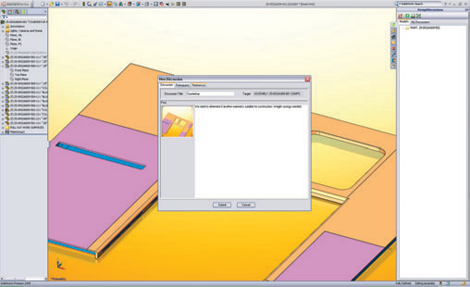
It’s been a while since I caught up with what Vuuch has been upto since it launched its social-media-collaborative-informal- tool last year and things are progressing nicely. As Josh Mings wrote in his review of the system last year:
There’s a critical metamorphosis about to change the way we communicate during design. You may sense it with each email you receive, each search you perform, and within the meetings where everyone scurries to make notes. This transformation is about moving critical design discussions into your design tools, making it a coordinated effort across the design team and into web interfaces where anyone can become a part of the process. The catalyst for this is Vuuch and it’s set to affect the whole landscape of how and where we discuss design.
I just got a message on twitter from Chris Williams, CEO of Vuuch, telling me about a webinar that they’re holding later this month. What caught my eye was a sentence on the invite page. It read:
Learn how Vuuch improves project execution while delivering product liability, compliance and regulatory requirements without forcing people to change how they work
I was curious as to how the system has progressed and how Chris and his team are looking to solve these particular problems, so I got some answers.
Chris WIlliams: Working habits (you know, the way shit actually gets done) have gone from a highly structured and heavily documentation based approach (SOPs and lots of paper work) to a very unstructured approach where now very little of what was done or how you did something is documented (well maybe it is fragmented in your inbox, but good luck putting it back together again). There are many drivers to this:
AdvertisementAdvertisement
- Our love affair with email
- Distributed organizations
- Organizational empowerment (push decisions into the organization)
- Shorter cycle times
- And on and on…
The customer has two big problems that they need to solve and they need to do so within a cycle that is dramatically reduced:
- Project Execution – Reduce cycle time and increased electronic communication has created a negative situation with respect to how a project is managed. This is not a project planning problem but this is a project execution problem (see attached ppt). This is a work management issue. Who is doing what and who else are they connected with and how do I keep people aware.
- Compliance (call it what you want, compliance, regulatory or liability) – All regulations today are focused on how you did something. For example the FDA medical device DHF regulations want to know what and who and they are not interested in the resulting versions. PLM is very good at telling you what A was and what B was and what C is, but PLM has no idea of how you went from one to the other and why. Liability based regulation is interested in validation down to a detailed level, what issue was defined, who contributed, what solutions were proposed, how did you pick the solution and what validation was done to determine the fix did not change the stated performance of the product. You can look at this from a law suit perspective as well. Who did what (this is why there are electronic forensic experts now – you know the people who can find what everyone expects is deleted).
Vuuch delivers to both of these because “Vuuch knows” the execution plan. Vuuch manages what happens. Vuuch knows how each person on the team is related to each component of the product. This is the essence of solving both problems stated above.
When we first looked at it, there was a basic Desktop Client as well as a SolidWorks and Pro/E plug-in. Things have moved on apace and there are currently plug-ins and workflows for MS Office, Pro/Engineer, SolidWorks, AutoCAD, Adobe PDF and a Desktop client. With this and other things Vuuch are working on, now would be a good time to sit in on the webinar and find out. it’s being held on the 25th of March at 10 EDT. Registration and further details are found here.
Further reading:
- Google Wave – the end of email?
- Josh Mings reviews Vuuch
- Josh Takes a look at Vuuch V1
- Social media and CAD
- vuuch.com: Applying social media to product development?
There’s also a presentation by Chris at Mass Innovation Nights (http://massinnovationnights.com/) from earlier this year that’s work a gander – and I’m glad ot say the camera work is even sketchier than mine:






